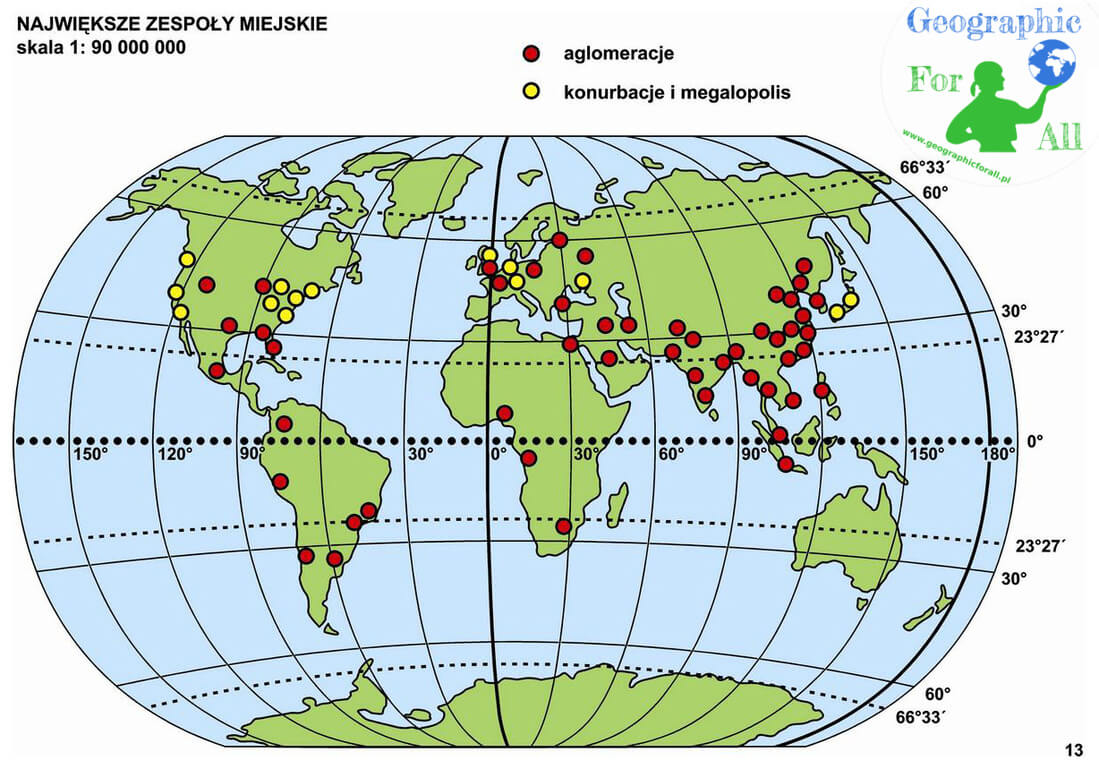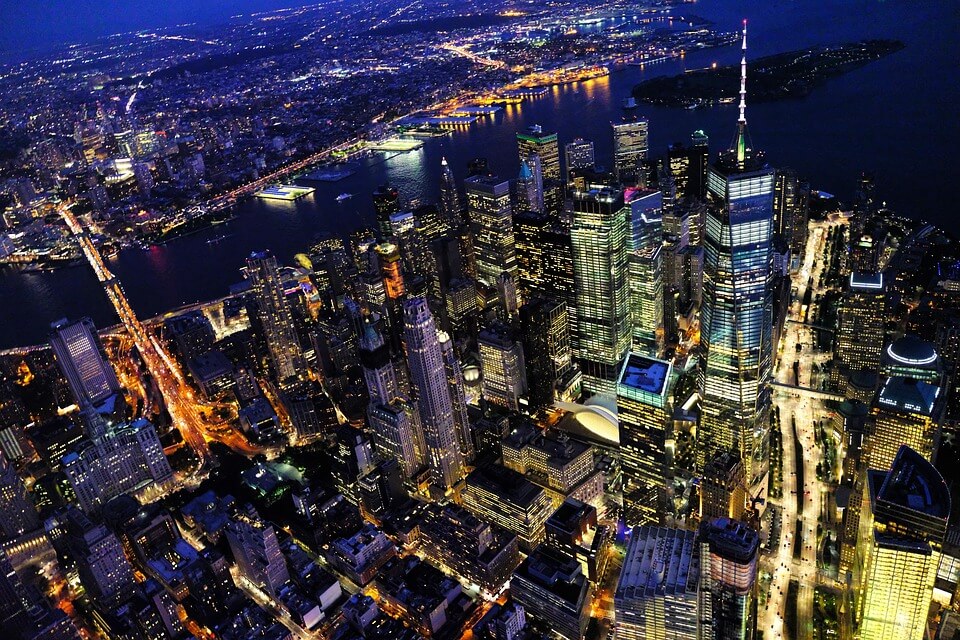Cities are small or large, but all have fairly compact buildings, a lot of people with urban lifestyles, mainly employed in industry and services. Whether a town deserves to be called a city depends on the law of the country. Sometimes an administrative decision is needed, and in other cases the right number of inhabitants, sometimes an official decree is based on the number of people. In Poland, you must have a min. 2000 citizens and meet several other criteria (morphology, social support, non-agricultural population). In the years 2010-2016, 22 cities were granted city rights, and since 1973 no Polish city has been deprived of this status.
Agglomerations
Agglomeration is a collection of several cities and towns (settlement units) that are functionally connected (e.g. through a dominant industry branch) and often spatially. The agglomeration stands out economically and has a population density.
Depending on the size of individual city-members (major and satellite) agglomerations are divided into:
- monocentric in which there is one clear centre. There are administrative and cultural buildings, higher education and shopping malls. The city is growing, absorbing neighbouring estates. Eg Warsaw, Paris, London, Berlin, Łódź.
- polycentric (bicentric and conurbations) in which two or more central areas exist. Cities connect with residential districts, and the centres have equal status. Conurbations are most often formed in industrial areas or from neighbouring ports. Eg GOP, Ruhr area, Lille-Roubaix-Tourcoing, Tri-City, Kędzierzyn-Koźle, Bielsko-Biała.
Metropolises and megalopolis
Let’s assume that the agglomeration will grow even more due to, for example, deurbanization and re-urbanization. A bigger creation than the agglomeration is metropolitan system, in short metropolis. The name is sometimes called simply large cities or capitals, which is not always correct.
Is there anything bigger than a metropolis? Of course. Several metropolitan systems form megalopolis. And to better illustrate some of the largest examples from the world (figures around 2012-15):
-
- Bosnywash Megalopolis – it includes Boston, Washington and New York (hence the name) as well as Hartford, Albany, Newark, Philadelphia, Baltimore and several smaller ones.
Length: 850 km
Width: 80-200 km
Population: 50 million - Chicator Megalopolis – cities of the Great Lakes region, i.e. Chicago, Toronto, South Bend, Flint, Toledo, Buffalo, Milwaukee, Gary, Detroit, Cleveland.
Population: 35 million - Sansan Megalopolis – the metropolises of San Francisco and Los Angeles, including the cities of Oakland, Sacramento, Berkeley, San Jose, Santa Barbara, Santa Cruz (do you know where the name comes from? :)), San Diego
Population: 28 million - Nippon Megalopolis – located in Honshu, consists of cities such as Tokyo, Chiba, Yokohama, Toyota, Kawasaki, Kobe, Osaka, Kyoto, Nagoya
Population: 83 million - cities Benelux , including Brussels, Eindhoven, The Hague, Amsterdam, Antwerp, Breda, Rotterdam.
- Brazilian – metropolis of Sao Paolo and Rio de Janeiro
Population: 35 million - Yangtze River Valley, or Shanghai and others
Population: 88 million - Cantonese, incl. Guangzhou and Shenzhen
Population: 50 million
- Bosnywash Megalopolis – it includes Boston, Washington and New York (hence the name) as well as Hartford, Albany, Newark, Philadelphia, Baltimore and several smaller ones.

Author: Mariusz Olczyk, Map available from the website tyflomapy.pl


0 Comments for “Types of cities – agglomerations and megalopolis”